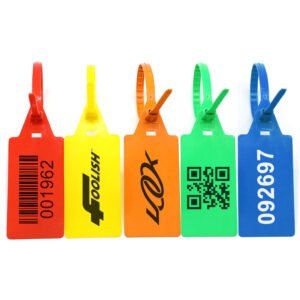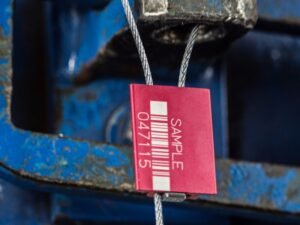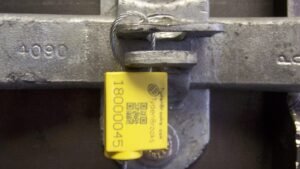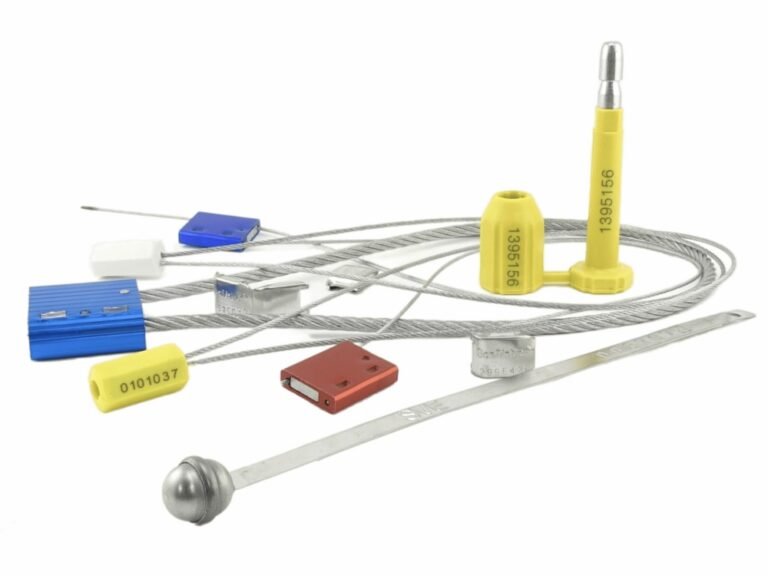
In today’s complex supply chains and increasingly counterfeit markets, seal security is no longer optional, but mission-critical. Brands and regulators alike need better digital tamper-proof solutions to ensure security from production to delivery.
At ProtegoSeal, we are at the forefront of this development. The most common digital tamper-proof technologies on the market are QR codes and barcodes. Which one can better meet the needs of enterprises? Let’s dive in.
Understanding Barcodes And QR Codes in Seal Security
Barcodes

Barcodes—specifically 1D barcodes—have been a mainstay in inventory and logistics since the 1970s. You’ll find them on virtually every package in a warehouse or grocery aisle.
It can meet basic tracking needs, is easy to print and scan, and has low cost, but has limited data capacity (about 25 characters) and low security
QR Codes

Modern QR codes are two-dimensional matrix codes developed for high-speed scanning on mobile devices. Unlike barcodes, they can store much more information, up to 7,000 characters, including URLs, dynamic IDs, geolocation, timestamps, and cryptographic authentication tokens.
Data Density & Functionality Comparison
| Feature | Barcodes | QR Codes |
|---|---|---|
| Data Capacity | ~20–25 characters | Up to 7,089 numeric or 4,296 alphanumeric characters |
| Encoding Method | 1D (linear) | 2D (matrix), supports numeric, alphanumeric, byte, and Kanji encoding |
| Error Correction | None built-in | Reed–Solomon error correction (up to 30% recovery) |
| Security | Low — easy to duplicate or alter | High — supports encryption, authentication URLs, geofencing, etc. |
| Scan Requirements | Requires direct line-of-sight and proper orientation | Can be scanned from any angle; tolerant of damage |
| Space Efficiency | Low data density — large space for limited info | High data density — compact for large information |
Reference: ISO Barcode vs QR Standard – ISO/IEC 18004
Cost Considerations: Barcode vs QR Code
The printing process and security are different, and the cost may also be different. The following are the common prices in the market.
| Item | Barcode | QR Code |
|---|---|---|
| Printing Method | Thermal transfer / Inkjet | Thermal transfer / Inkjet |
| Per Seal Printing Cost | ¥0.03 – ¥0.10 | ¥0.05 – ¥0.15 |
| Laser Engraving Cost | ¥0.20 – ¥0.50 | ¥0.20 – ¥0.60 |
| Data Capacity | Low (numeric/code only) | High (URLs, tokens, etc.) |
| Security Level | Basic | High (can support encryption, dynamic tokens) |
| Recommended Use | Simple tracking / logistics | Anti-counterfeit, traceability, authentication |
| Software Requirement | Not required | Required for dynamic QR |
Case Study: Pharmaceutical Tamper-Proof Packaging
The World Health Organization estimates that countries spend $30.5 billion each year on substandard and falsified medical products
Pharmaceutical companies working with ProtegoSeal integrate dynamic QR codes into tamper-evident security seals for primary and secondary packaging based on their needs. Each QR code is embedded with a one-time verification token and uses batch-level encryption technology.
Results:
- 97% scan success rate across 18 countries
- 34% reduction in detected counterfeit shipments
Barcode or QR: Which Fits Your Industry?
| Industry | Recommended Code Type | Reason |
|---|---|---|
| Pharma | QR | Serialization + compliance |
| Food & Beverage | QR | Transparency + cold chain data |
| Retail | Barcode + QR combo | POS + consumer interaction |
| Logistics | QR | Real-time tracking |
| Electronics | QR | Anti-counterfeiting features |
Why ProtegoSeal Recommends QR for High-Security Seals
Our internal testing found QR consistently outperforms barcodes across security, usability, compliance, and customer satisfaction. ProtegoSeal’s proprietary QR+ encryption adds dynamic safety features to secure your product lifecycle.
Final Verdict: The Smarter Seal is QR
Barcodes still play a role—but for smart, secure, and future-ready seal protection, QR codes are the gold standard. ProtegoSeal’s QR SmartSeals protect, engage, and build trust.
Ready to upgrade your seal security? Talk to our team today to explore a QR-based solution tailored for your business.
Frequently Asked Questions (FAQ)
Are QR codes harder to duplicate than barcodes?
Yes. Encryption and dynamic data make duplication very difficult.
Do QR seals require an internet connection?
Not for basic content. For dynamic verification, internet access is required.
How does ProtegoSeal customize QR solutions?
We provide encryption, secure templates and analytics tailored to your supply chain.

